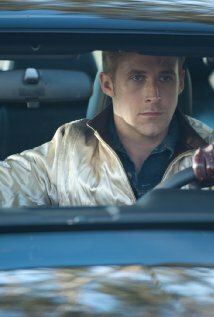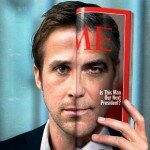Nicolas Winding Refn’s Drive it is a perfectly measured work of cinematic style and artistry. The story of a Hollywood stuntman (Ryan Gosling; Crazy, Stupid, Love) who moonlights as a getaway driver, it glides with perfect pace and rhythm like a shark through midnight waters, masquerading as a mainstream action movie when it is in fact a slow-burning art-house drama – albeit one with an ultra-violent edge. Engrossing from the opening frame, the film is a fascinating character study, thrilling genre piece and bona fide auteurist masterpiece, one where every shot, edit, beat and smouldering gaze is physically and psychologically entrancing.
While Drive is a lot of things, one thing it isn’t is a testosterone fuelled thrill ride in the vein of The Fast and the Furious. The opening sequence sets the tone of the film far more accurately than its trailers, as we are made to understand that in Refns’ movie, action has been substituted by razor-wire atmosphere and magnetic visual panache. Gazing from a window over the lights of Los Angeles, clad in leather gloves and a white jacket emblazoned with a golden scorpion, our nameless antihero speaks into a phone words he has clearly spoken many times before. Parked in an empty street soon afterwards, he waits while two masked bandits burglarize a warehouse; what they are stealing is of little importance. The rhythm of Cliff Martinez’s electronic score creeps quietly along in the background, sending low reverberations pulsing through your chest; between Drive and Contagion, Martinez has been responsible for the two best sounding films of the year.
The minutes that follow are a high-minded, low-octane, intensely gripping cat and mouse game through the cities maze-like streets, as The Driver eludes police not with speed but with strategy. A sequence more heart-racing than any Vin Diesel vehicle, it also offers clear insight into our protagonist’s psychological makeup. With hardly any dialogue to speak of in this scene (or in any other), almost everything about the character is communicated non-verbally, through his face, his clothes, his barren apartment and the way he handles himself behind the wheel. He is a man methodical in his actions, unflinching in his focus and driven by a single overriding purpose. Gosling works marvels with sparse material, disseminating a cool, hard, robotic exterior that is cracked throughout the film only in the most fleeting of moments by nuanced flashes of tenderness, anger, vulnerability and regret.

The primary catalyst for any emotion Gosling’s character shows is his neighbour Irene, a single mother played with doe-eyed femininity by the immensely talented and classically beautiful Carey Mulligan (An Education). The uncertain romance that develops between them occurs almost entirely through glances and the slightest of smiles. Silence in this film speaks volumes, as do the words characters choose to avoid. Such is the case in the phenomenal scene of unspoken tension when Driver meets Standard (Oscar Isaac; Sucker Punch), Irene’s fresh out of prison husband, for the very first time. Standard’s return soon inadvertently puts his family in danger from a pair of mobsters played by a boorish Ron Perlman (Conan the Barbarian) and a marginally more agreeable but no less dangerous Albert Brooks (Finding Nemo). The gangsters also have business with Driver’s friend and occasional employer Shannon (the always excellent Bryan Cranston; TVs Breaking Bad). With the threat of violence imminent, our taciturn protagonist enters into the equation himself to protect the few people he truly cares about.
Danish director Nicolas Winding Refn, the man responsible for the critically acclaimed Pusher trilogy and the Tom Hardy vehicle Bronson, demonstrates an awe-inspiring grasp of cinematic craft and history. It’s no coincidence that the film is set in the movie capital of the work, which cinematographer Newton Thomas Sigel (also responsible for the visually dynamic Three Kings) captures beautifully in both its sun soaked days and its glassy, neon nights. The film pays homage to motion picture styles and genres as eclectic as exploitation flicks, the Scandinavian avant-garde movement, 40s noir films, 90s crime thrillers and of course, 70s car movies — all set, bizarrely, to the tunes of a collection of campy 80s inspired synthetic pop songs that go right along with the lurid pink title font. The violence comes in short but sudden and extremely — extremely — graphic bursts that rattle the sense and prove that gore is most confronting when it’s used sparingly.
Drive may very well alienate mainstream audiences, especially those who — like the American woman who sued the film’s distributor — feel tricked by the action-packed marketing campaign that promises a very different kind of motion picture. This is not a gritty car chase film, although it has grit and at least one fantastic car chase. What it is, instead, is a deliberately paced hybrid of high and low art, one that burns ice-cold with meticulous steadicam shots and hypnotic slow-motion, effortless coolness and stylish intelligence. My question is: lady, why would you want it to be anything else?
 Follow the author Tom Clift on Twitter.
Follow the author Tom Clift on Twitter.















![The Girl with the Dragon Tattoo [2011] (Review)](/wp-content/uploads/girl-with-dragon-tattoo-2011-poster11-e1326691158273-150x150.jpg)